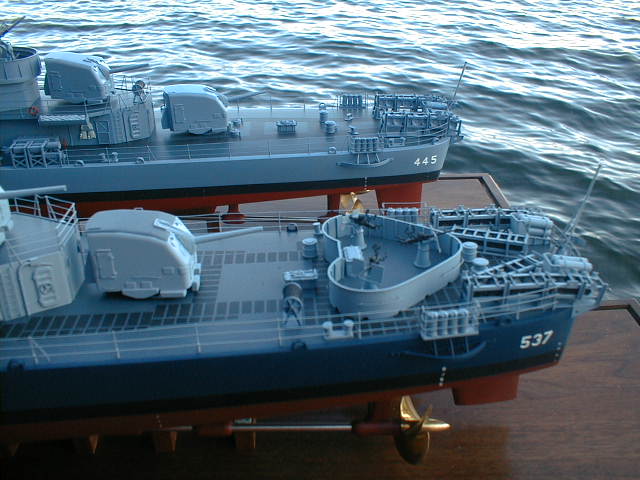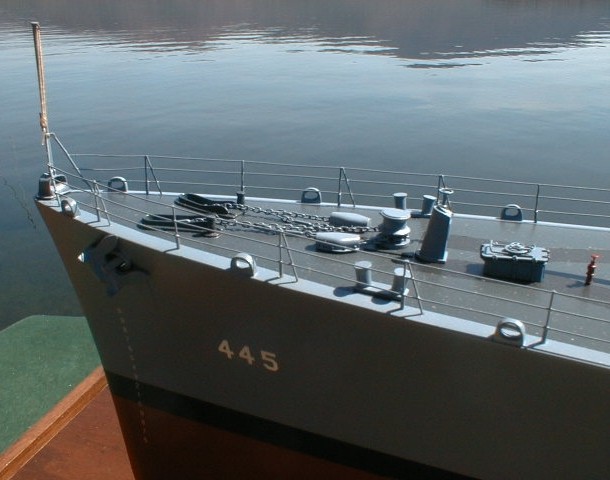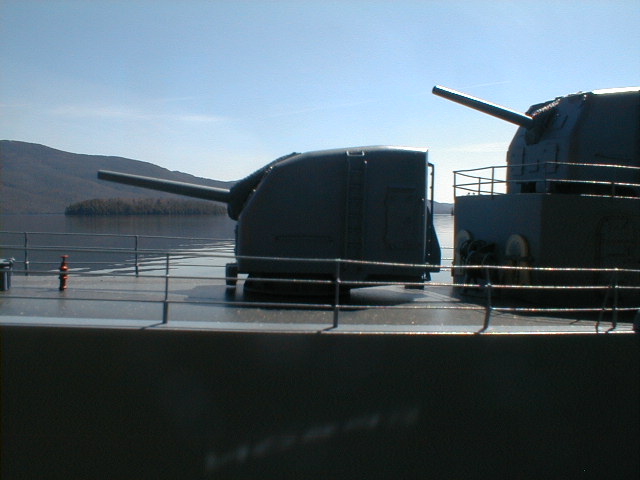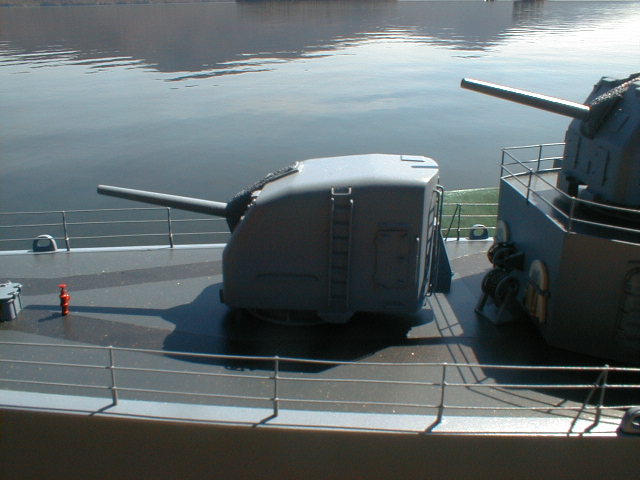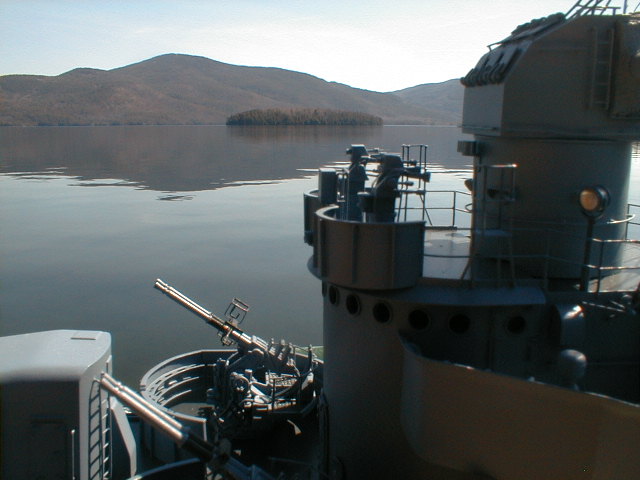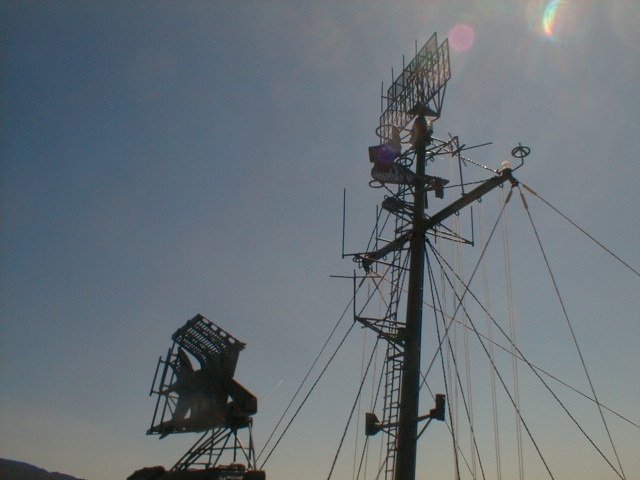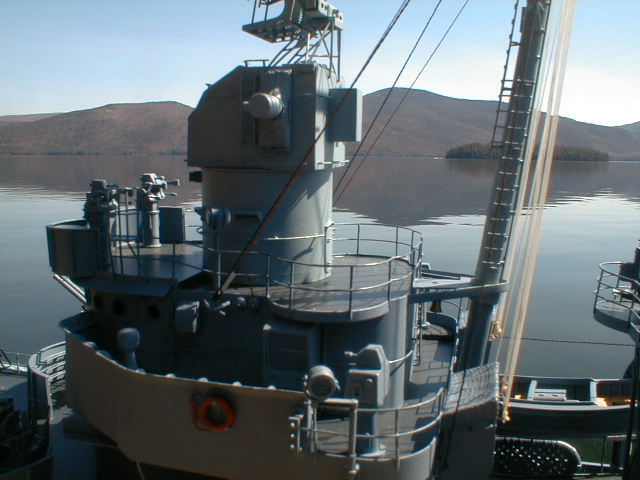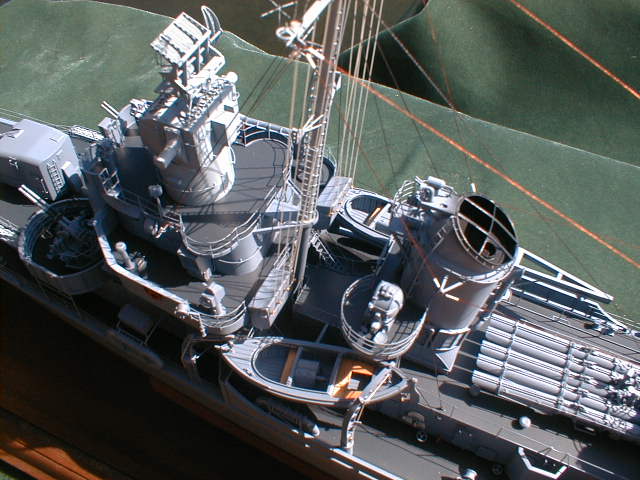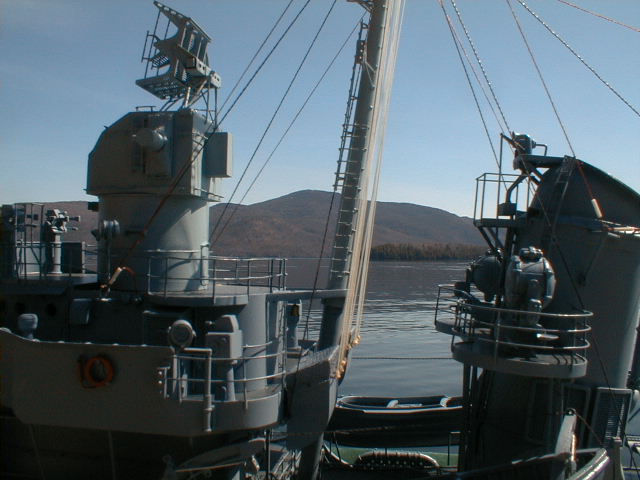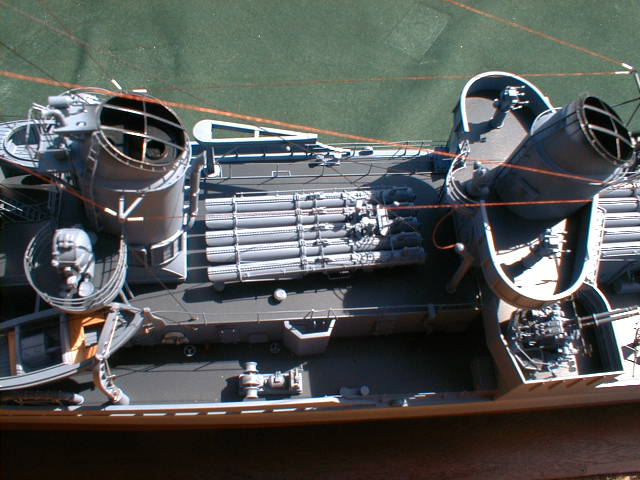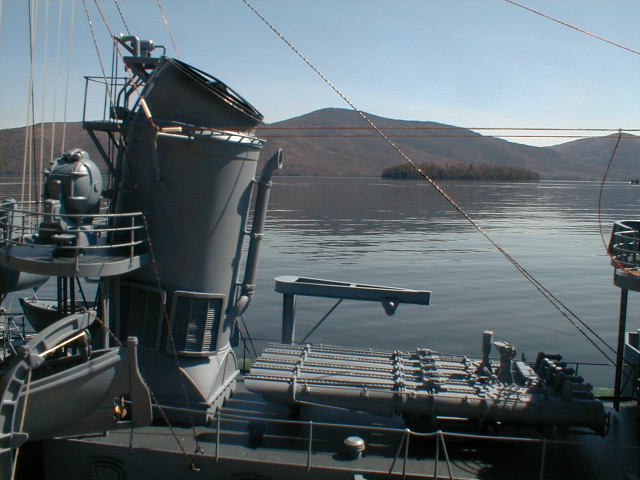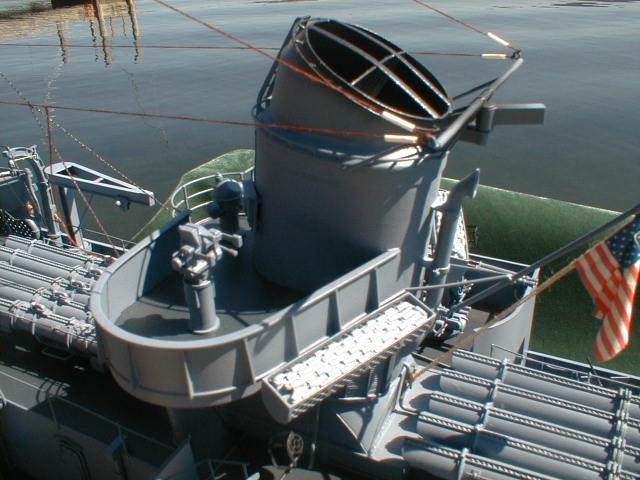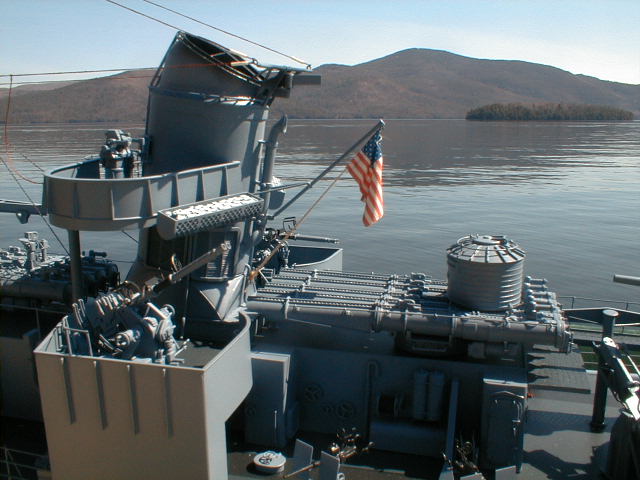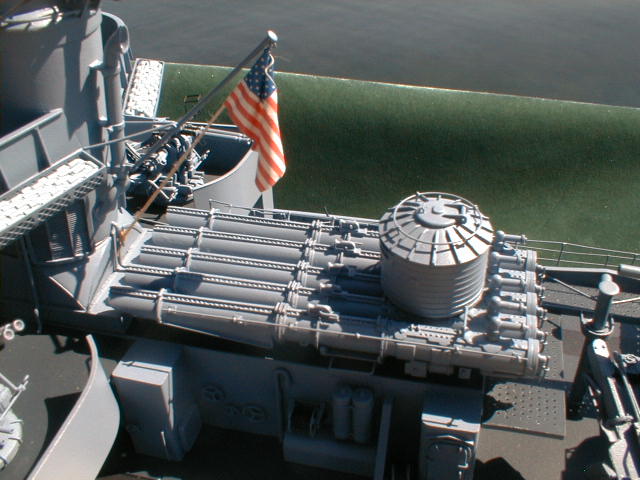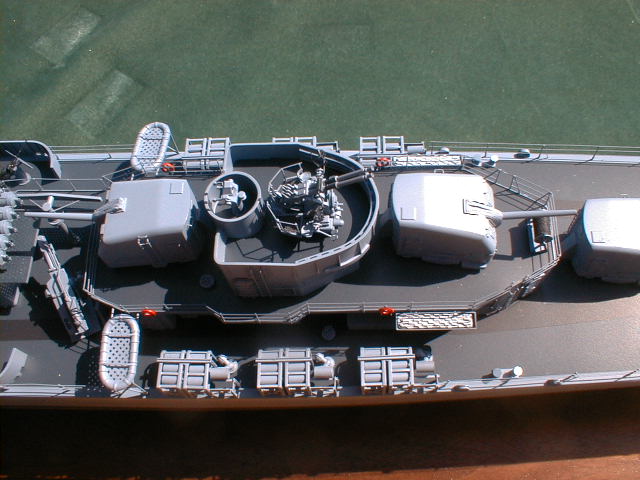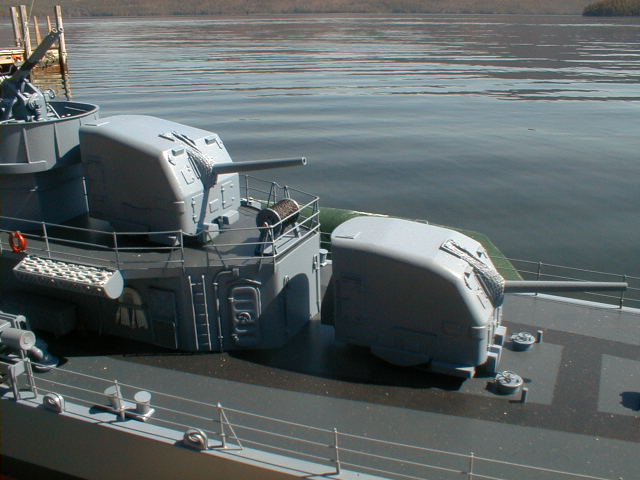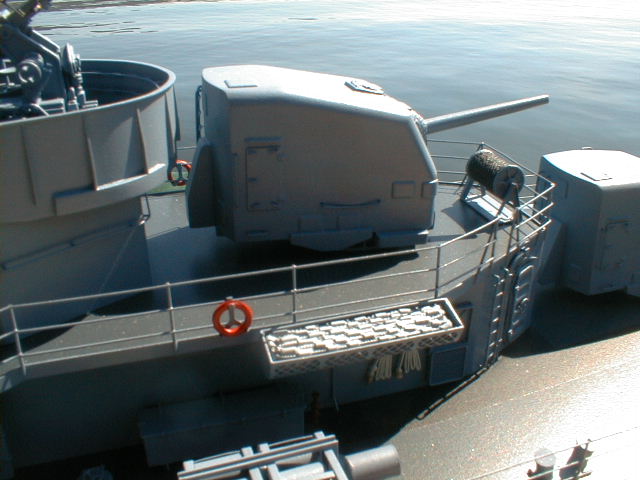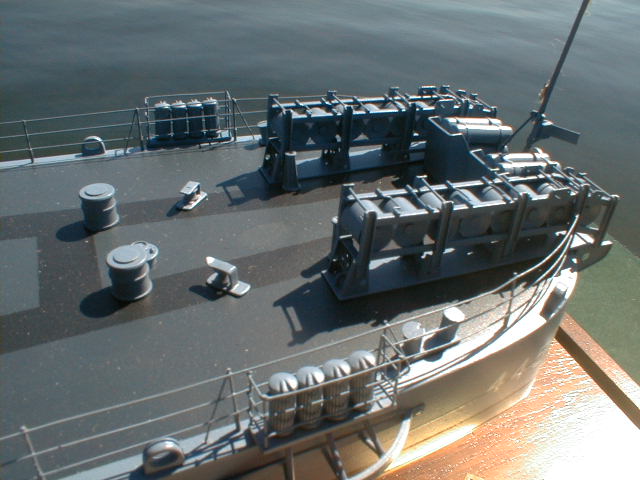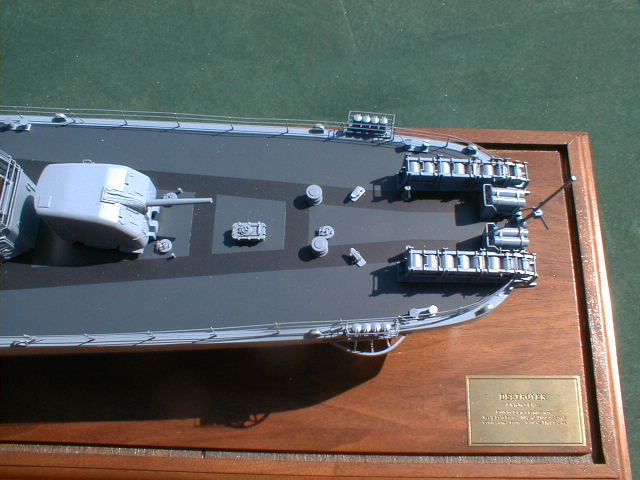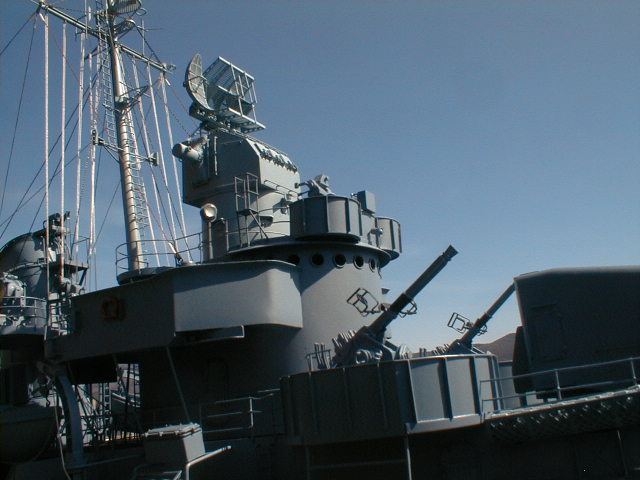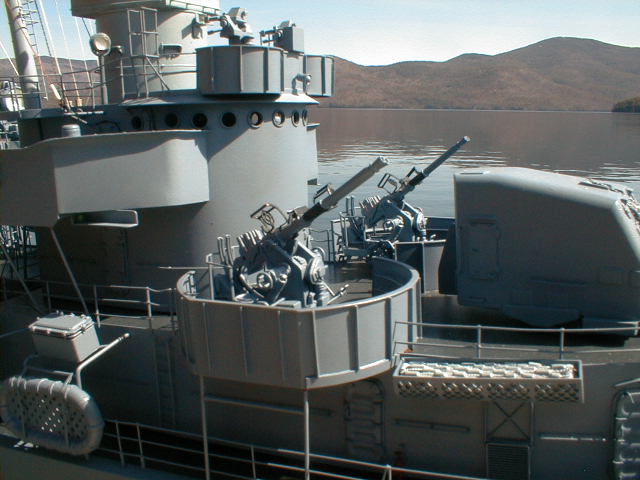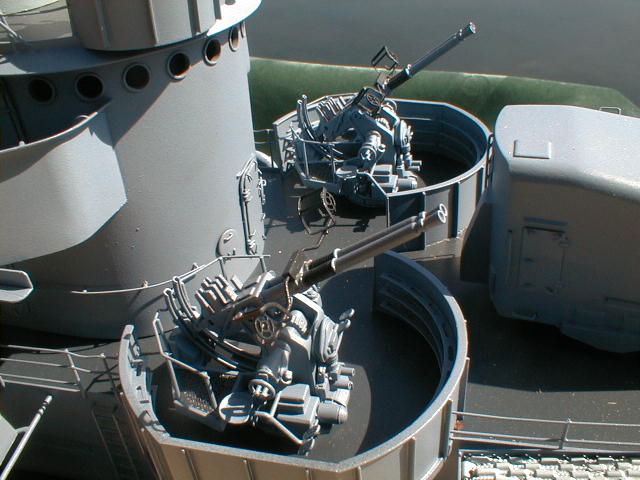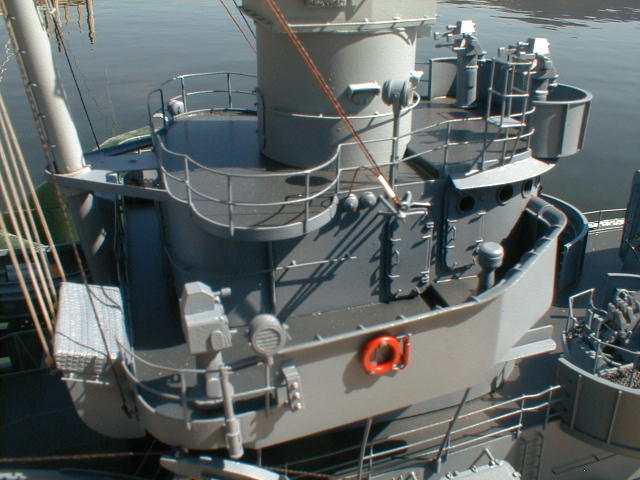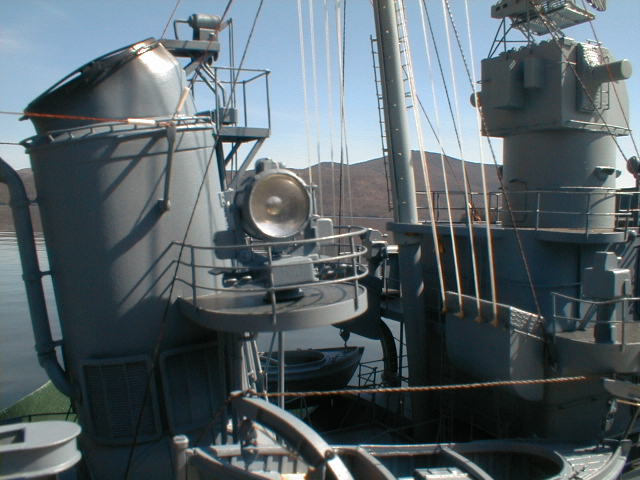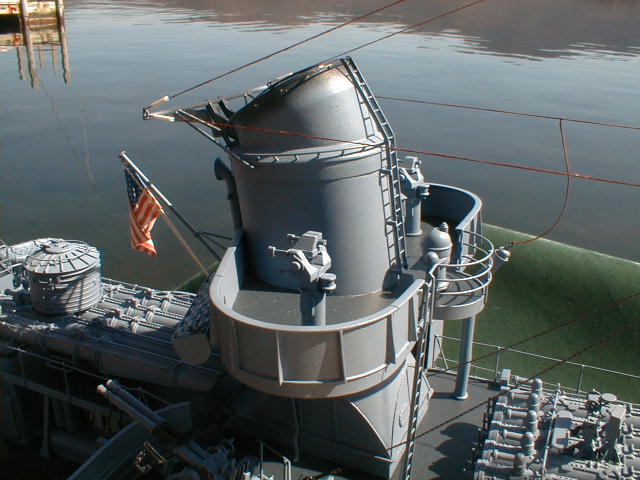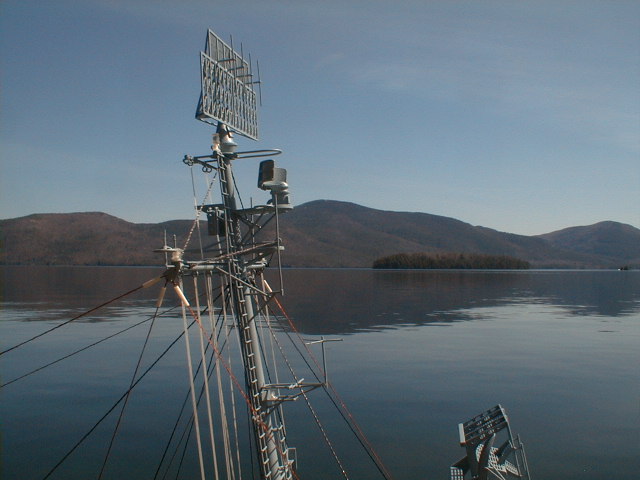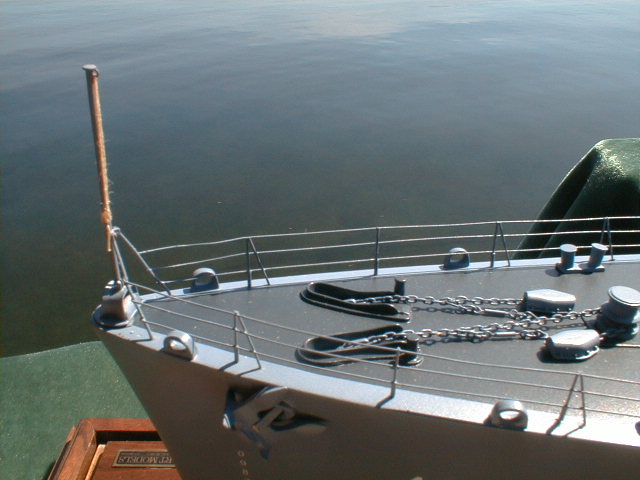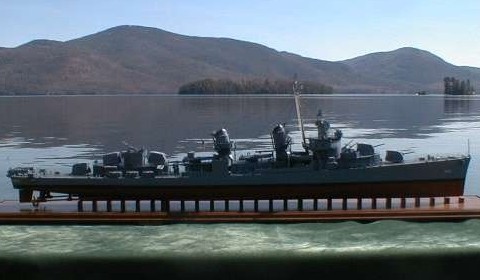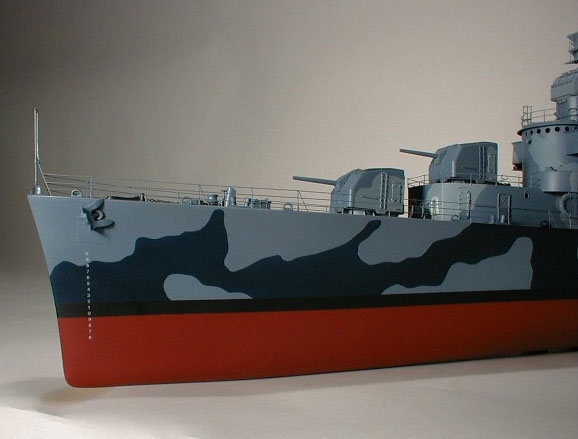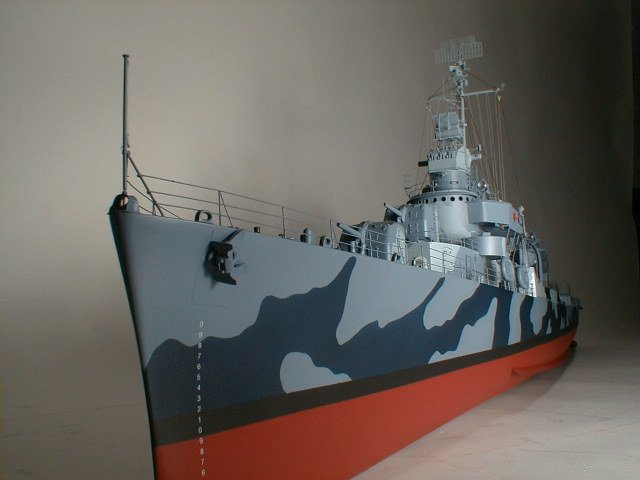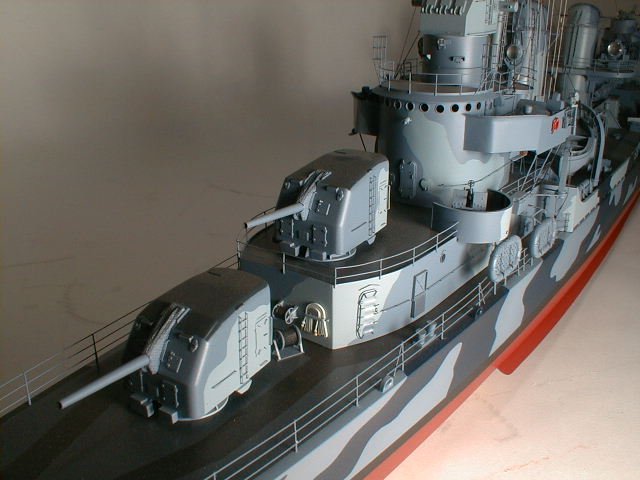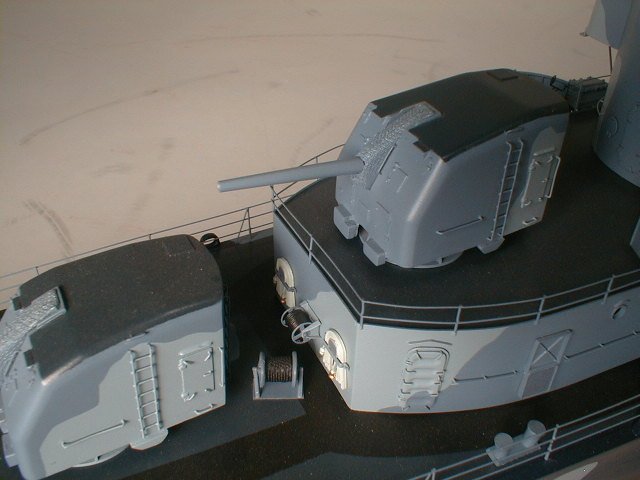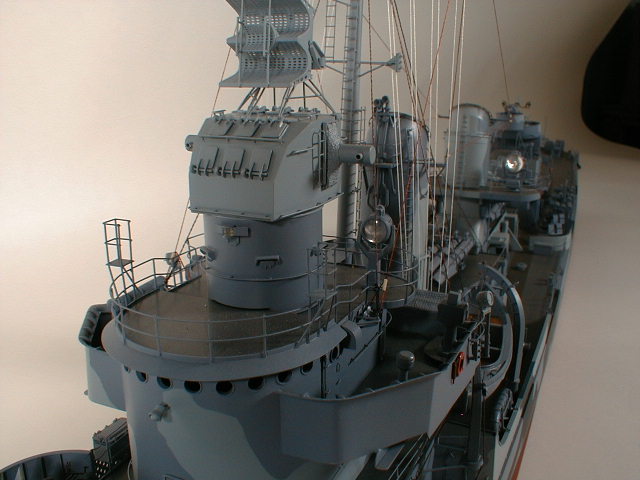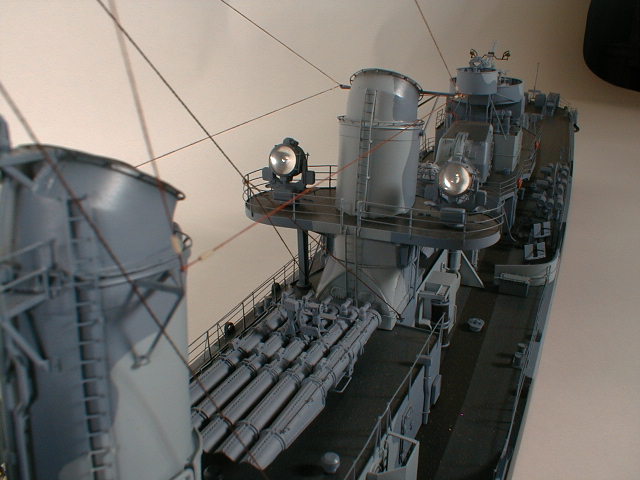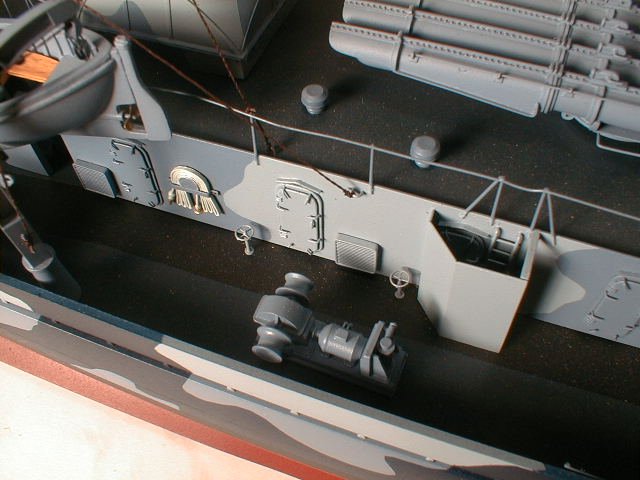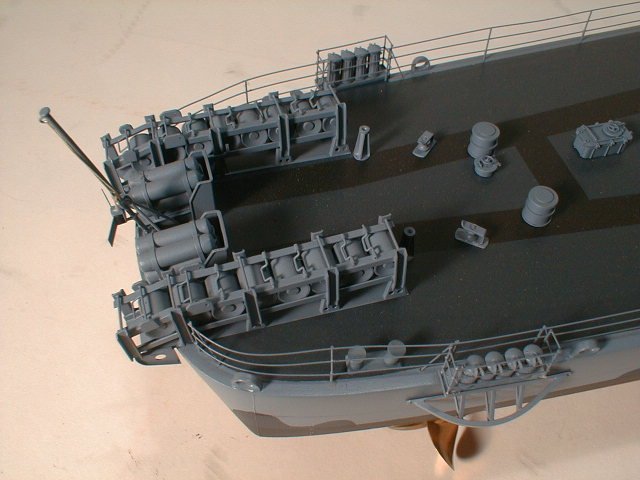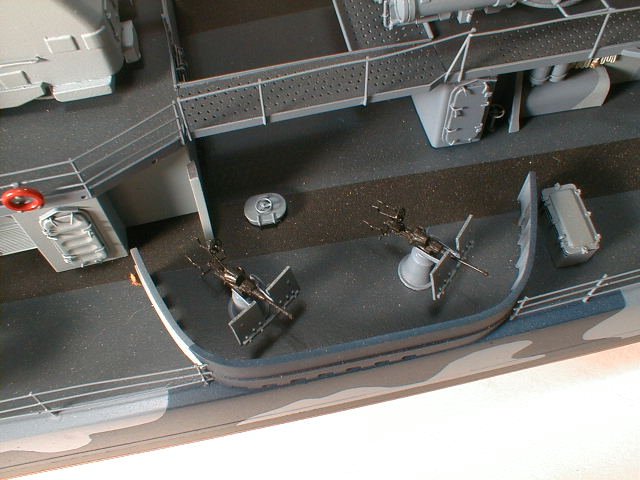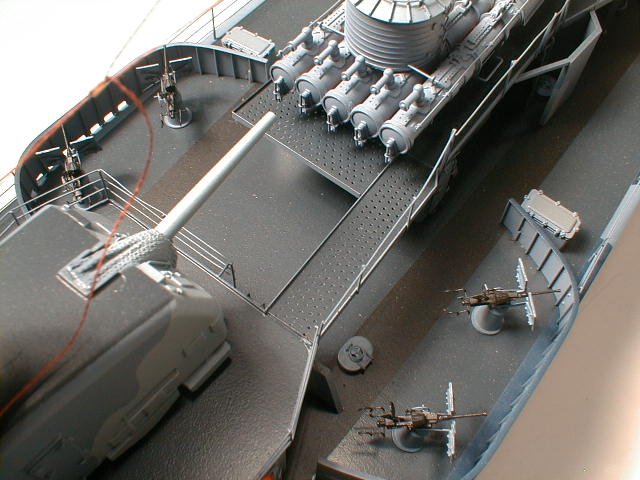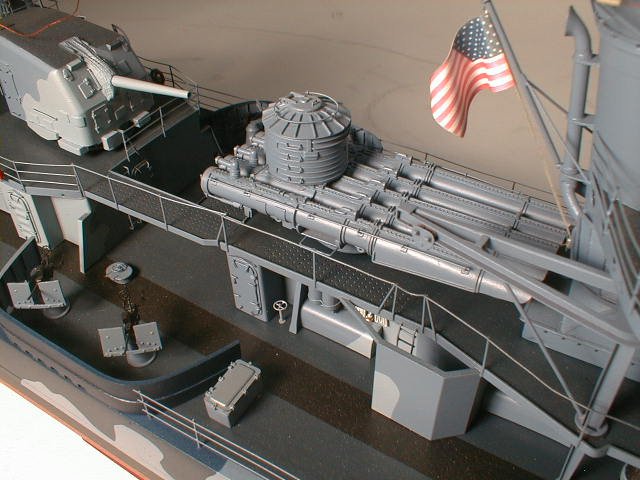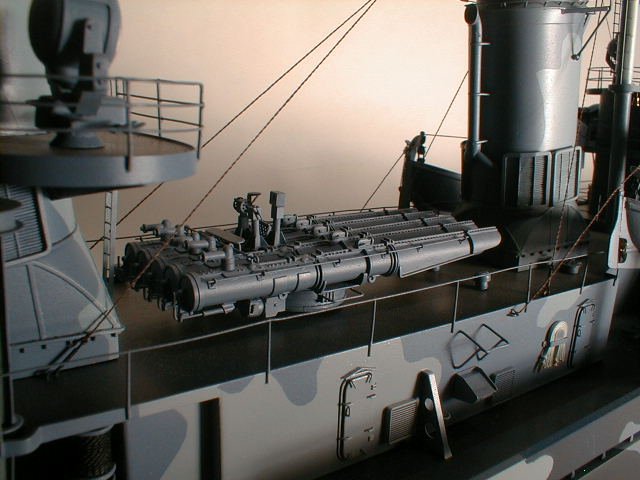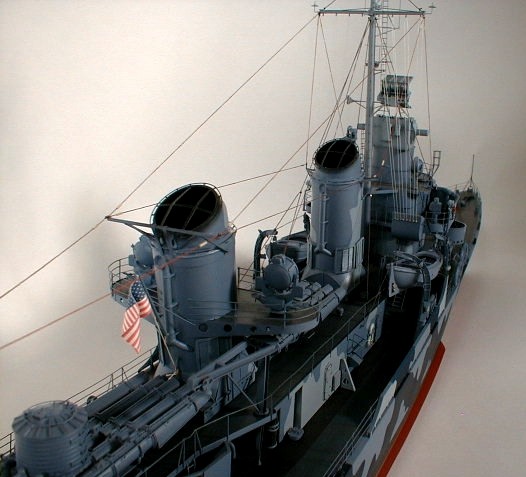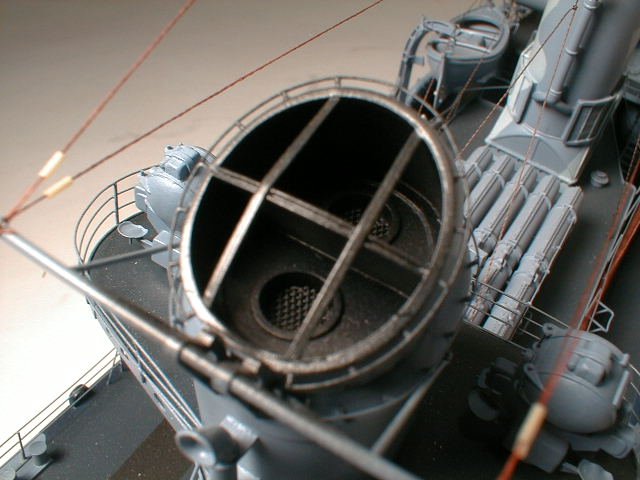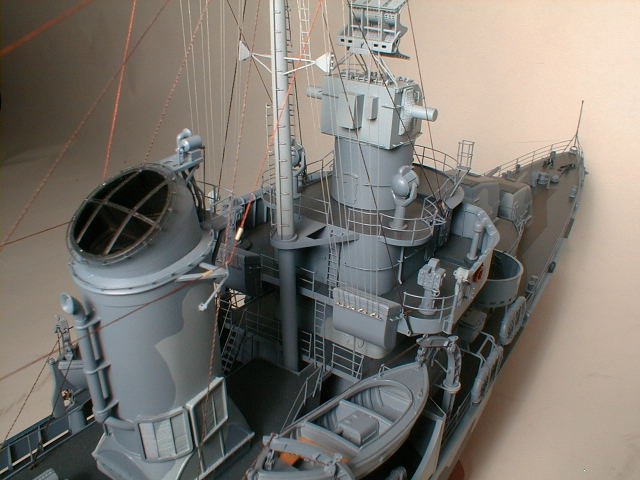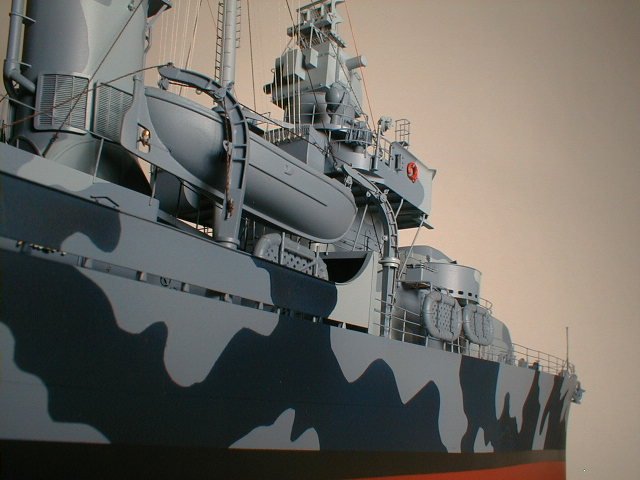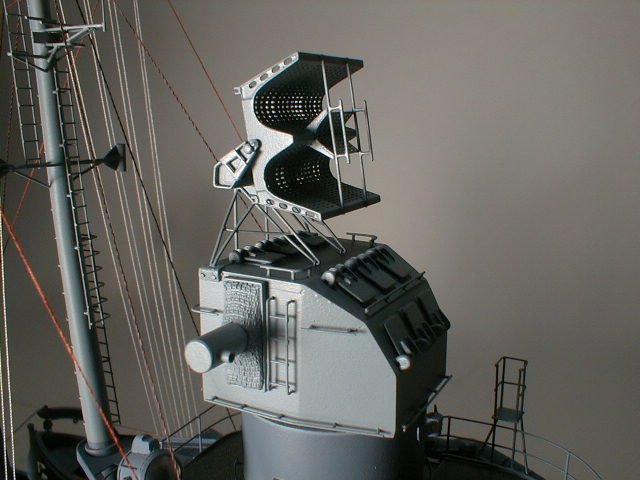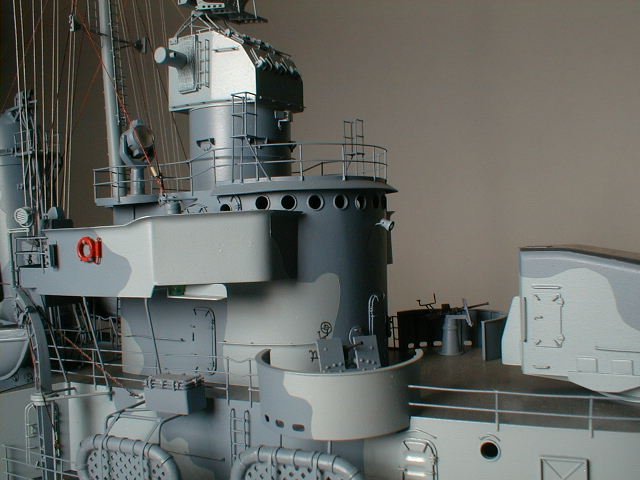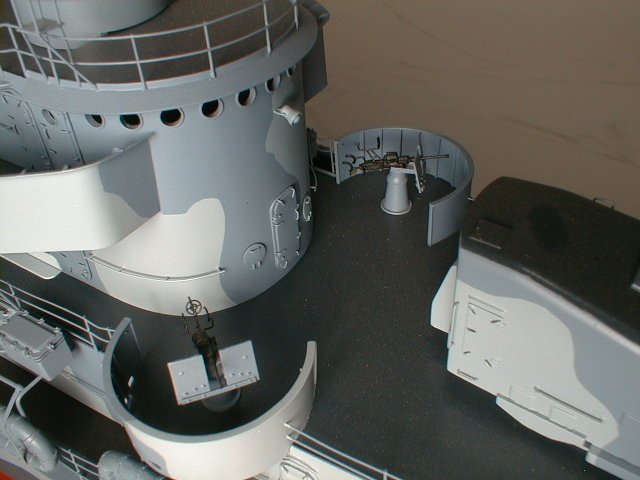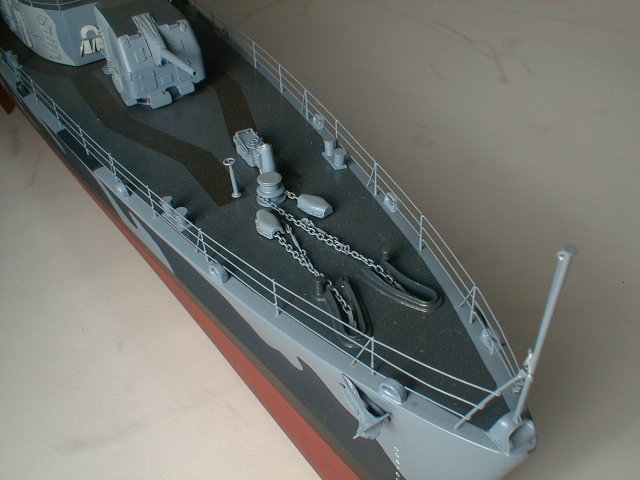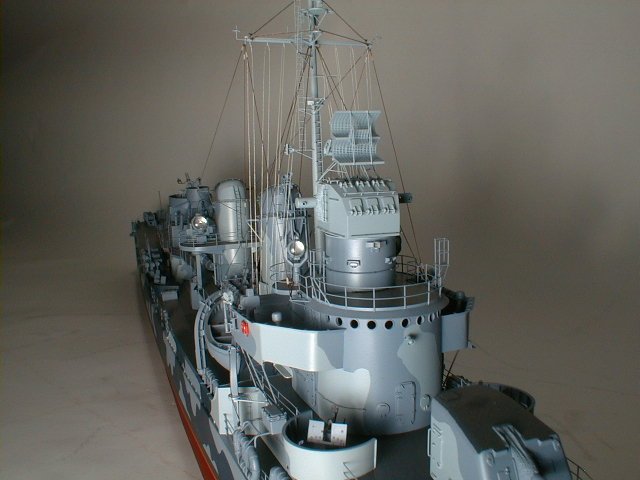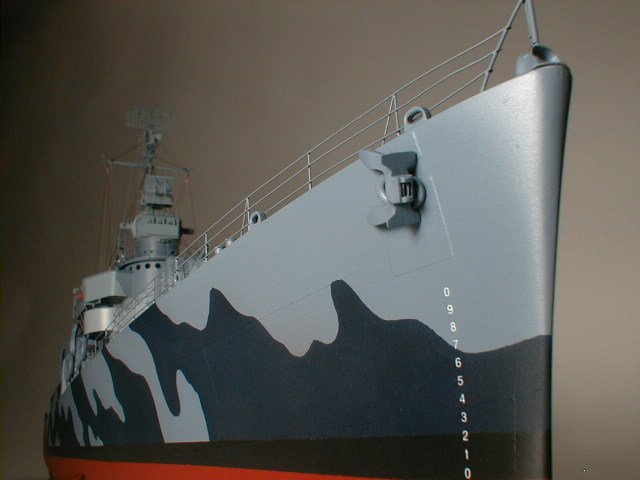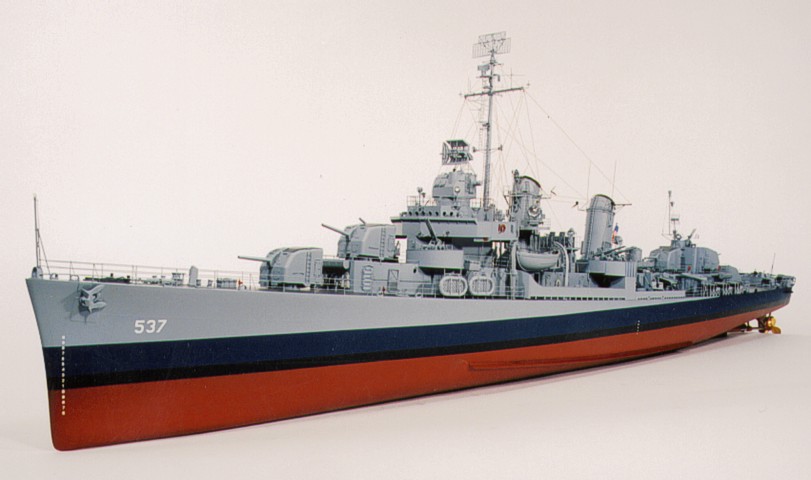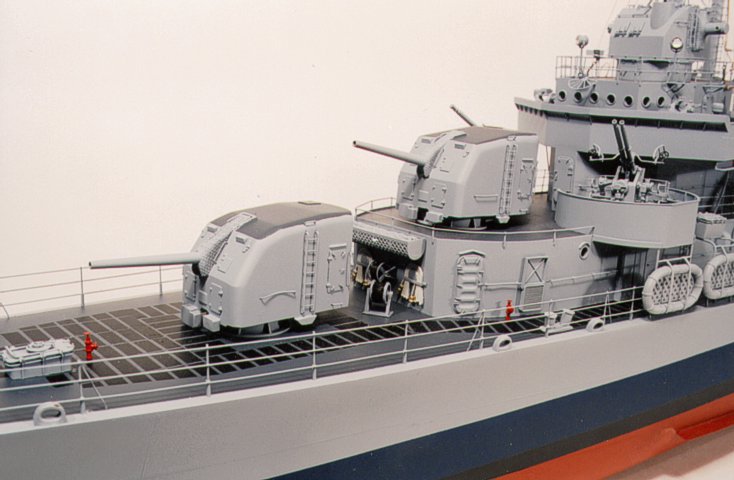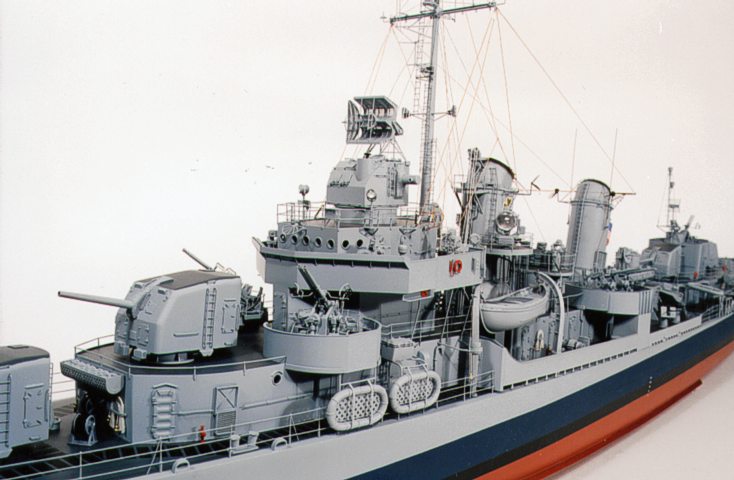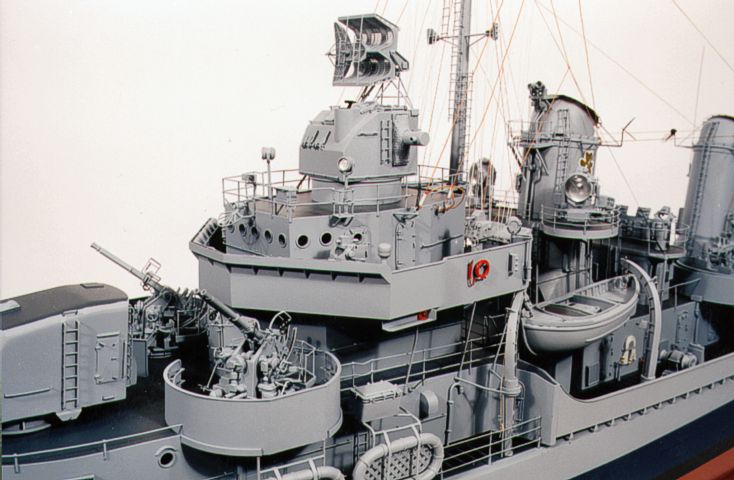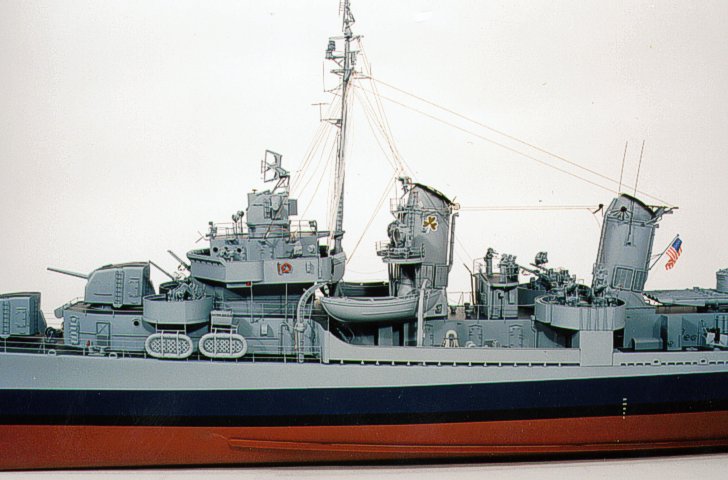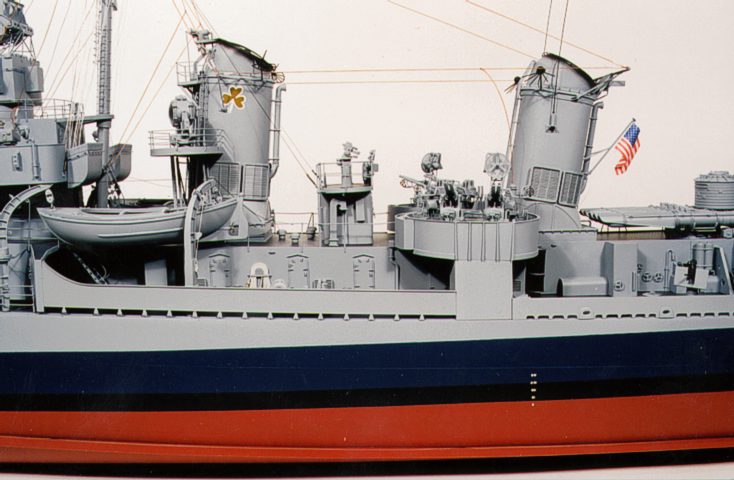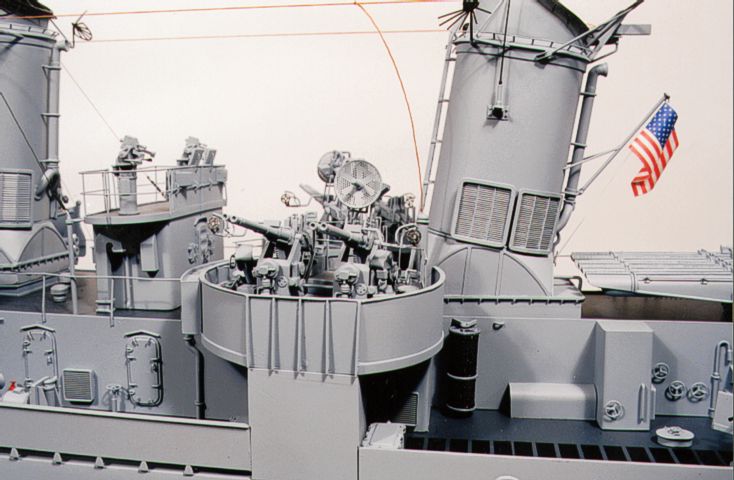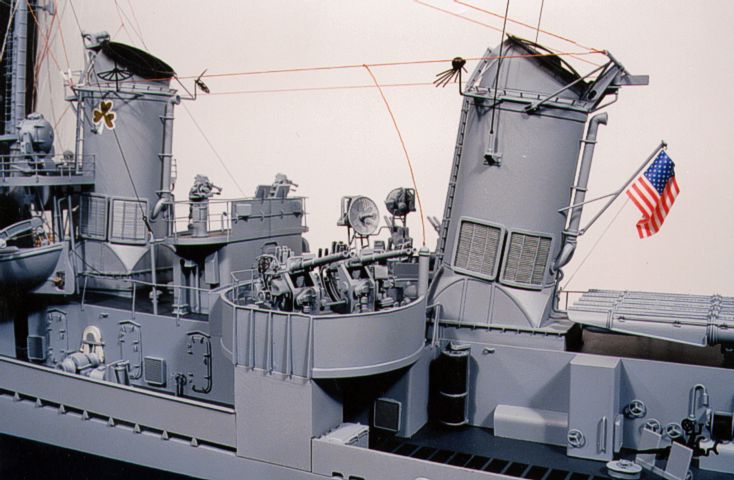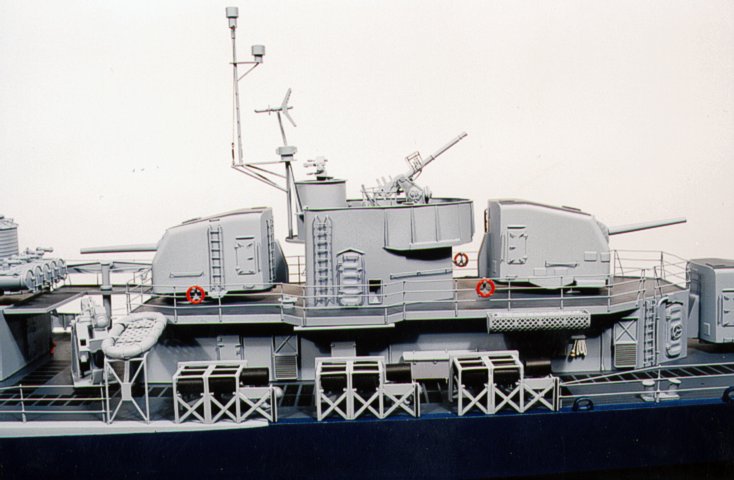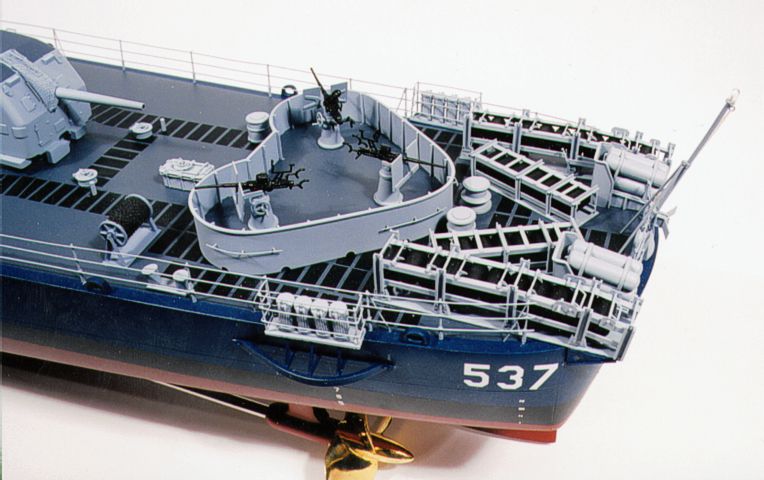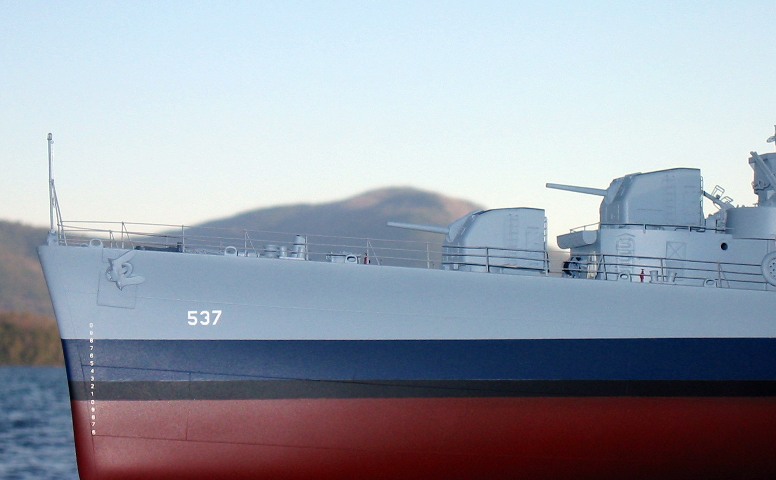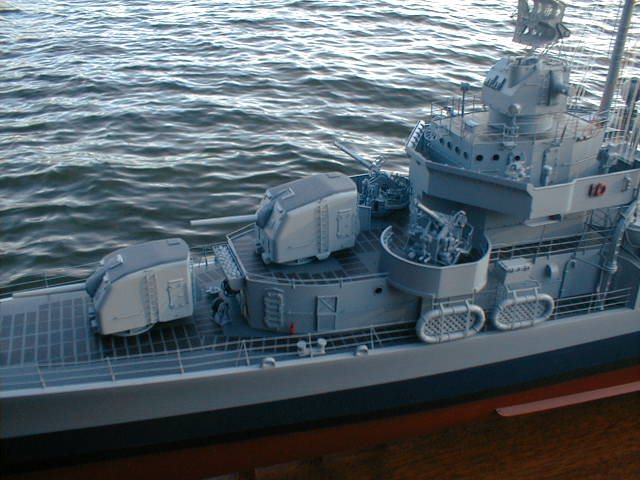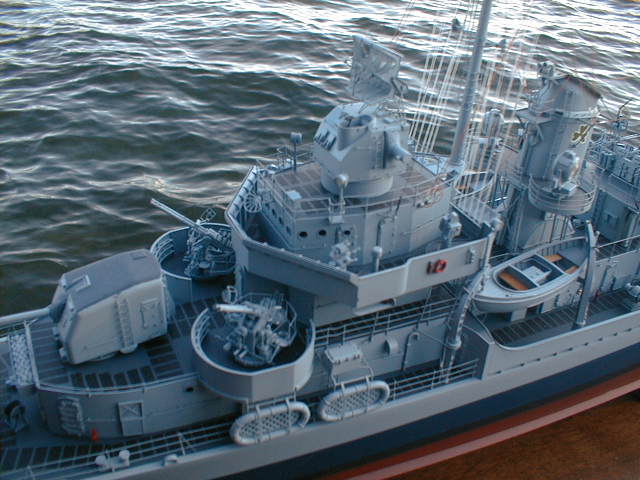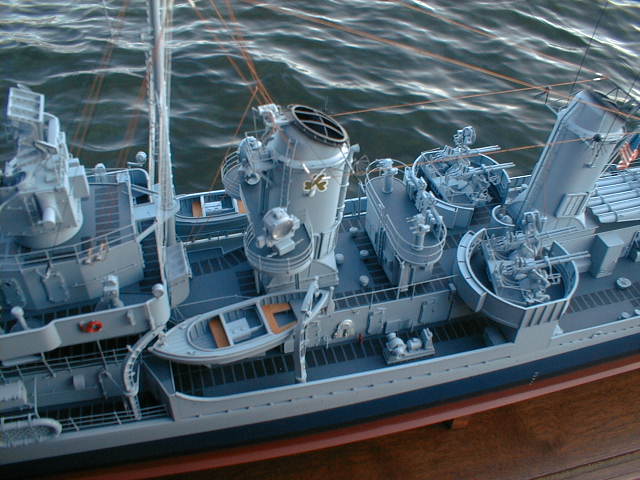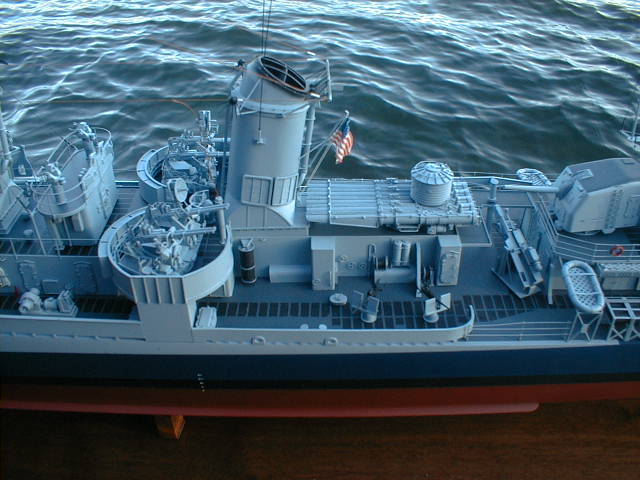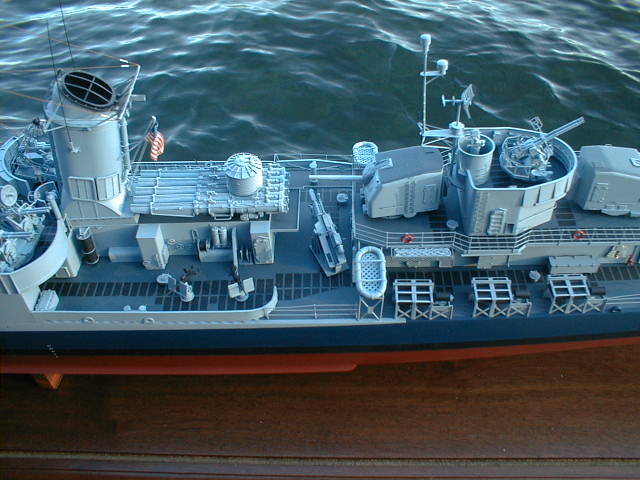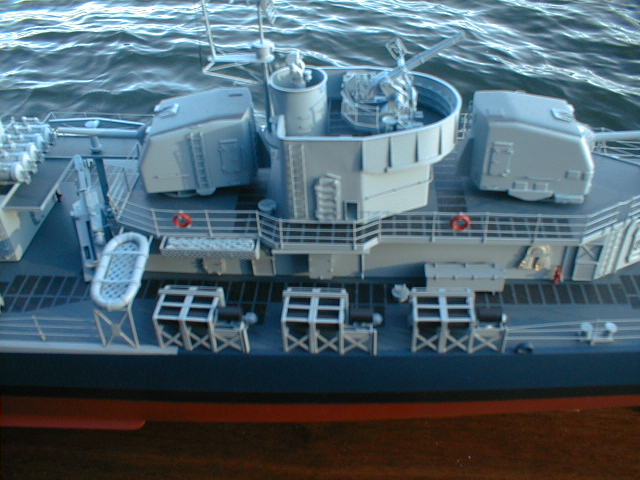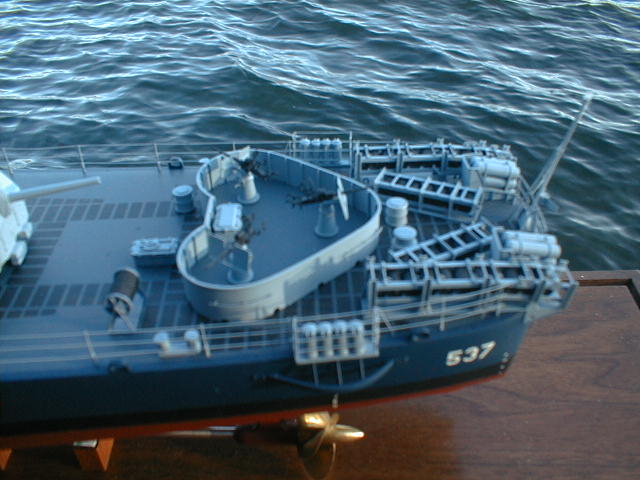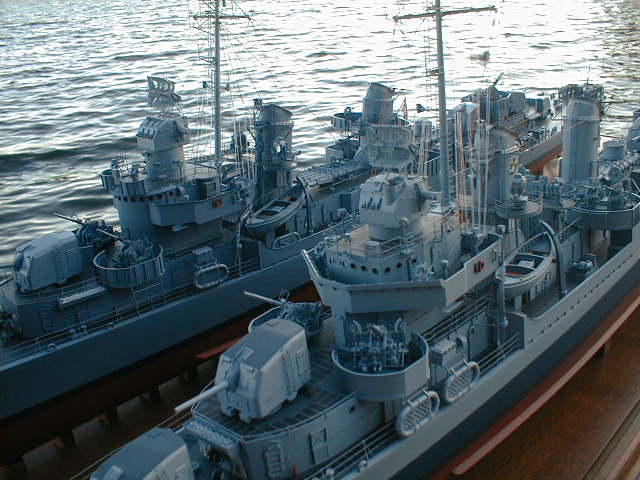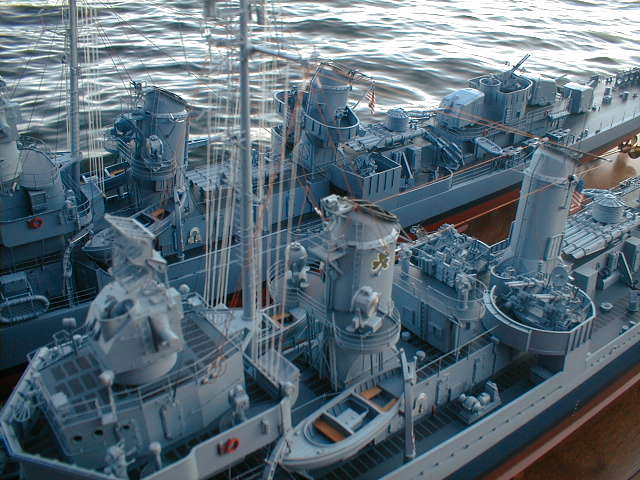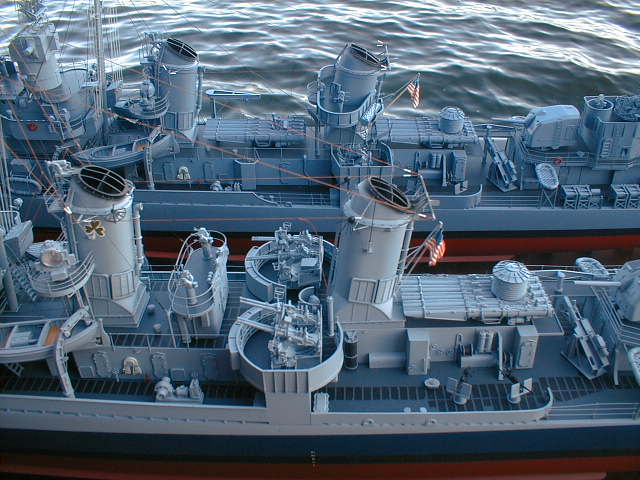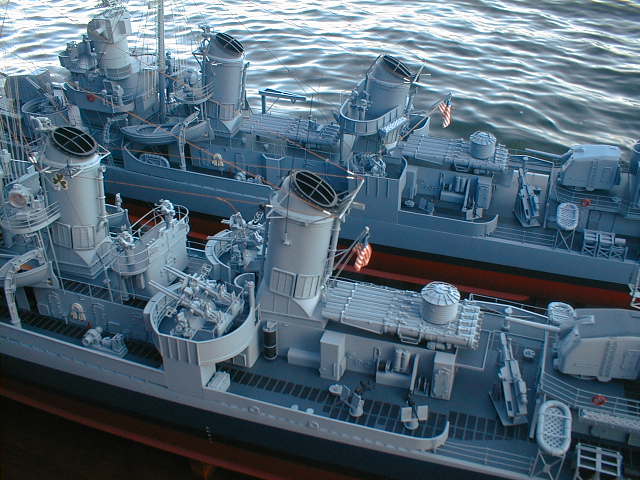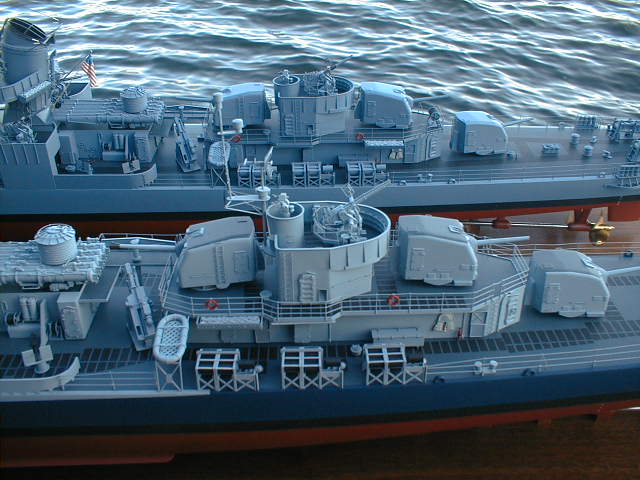Fletcher
Fletcher Class Destroyer – USS Nicholas – As Built
- Scale: 1:96
- Release: 1994
- Limited Edition: 18
- Model Size: 48”L x 5”W x 13”H
- Base Type: Black Walnut
- Base/Case Size: 53”L x 9”Wx 16”H
- Availability: Sold Out
Fletcher Class Destroyer – USS Fletcher – Mid War – Camo
- Scale: 1:96
- Release: 1996
- Limited Edition: 18
- Model Size: 48”L x 5”W x 13”H
- Base Type: Black Walnut
- Base/Case Size: 53”L x 9”Wx 16”H
- Availability: call for availability
Fletcher Class Destroyer – Late War – The Sullivans
- Scale: 1:96
- Release: 1996
- Limited Edition: 12
- Model Size: 48”L x 5”W x 13”H
- Base Type: Black Walnut
- Base/Case Size: 53”L x 9”Wx 16”H
- Availability: Sold Out
Fletcher-Class Destroyer
Without question, the most famous destroyer-class to serve in World War II was the Fletcher. Described as perfect fighting destroyers, Fletchers, as built, were powerfully armed (five (5) 5-inch guns and ten (10) 21-inch torpedo tubes), fast (36 knots), amenable to wartime modifications, and extremely resilient in battle.
At 2,100 tons standard displacement, 376½ feet in overall length and rated for 60,000 shp, they were significantly larger than preceding classes. Their 1941 design coincided with an acceleration in US shipbuilding, as the war approached, and their production required the expansion and/or addition of several shipyards. Eventually, eleven (11) yards completed 175 units—more than any other destroyer-class, in just 2½ years beginning in 1942. By VJ Day, some of them had steamed more than 1/4 million engine miles.
Two groups were built. The first had high, streamlined bridges and high gun directors inherited from the prewar Sims class. The second group, beginning with USS Brownson (DD 518), had lower, squared-off bridges with an open walk-around area for better vision during anti-aircraft action. The lines and balanced appearance of both versions were among the most graceful of all 20th century warships.
Fletchers served almost exclusively in the Pacific theater and became the backbone of the fleet for some of the most vicious fighting of the war. Many saw action in the famous nighttime surface battles of the Solomon Islands campaign and Leyte, and all were completed in time for fleet escort and shore bombardment assignments and the notorious anti-kamikaze radar picket duty at Okinawa. Nineteen (19) were lost and six (6) more were damaged beyond repair. Survivors served in Korea and some even in Vietnam and on Gemini and Apollo recovery missions. Thirty-two (32) were transferred to the navies of Argentina, Brazil, Chile, Columbia, Germany, Greece, Italy, Japan, Korea, Mexico, Peru, Taiwan, Turkey and Spain. By 1971, all units remaining in the US Navy had been retired.
Today, three are preserved on public display: USS The Sullivans (named for the five Sullivan brothers killed in action together) in Buffalo, USS Kidd (named for Admiral Isaac Kidd, lost with USS Arizona at Pearl Harbor, and beautifully restored to late-World War II configuration) in Baton Rouge, and USS Cassin Young at the Charlestown Navy Yard in Massachusetts, berthed next to the USS Constitution.
Fletcher-Class Destroyer – USS The Sullivans
USS The Sullivans was named in honor of the five Sullivan brothers who, at their own request, were assigned to serve together. They were all lost when their ship, the light cruiser USS Juneau, was torpedoed in November 1942 near Guadalcanal.
A low-bridge Fletcher, The Sullivans was commissioned in 1943 and served mainly as an escort for fast carrier task forces in the Pacific. Mothballed after World War II, she was returned to service in 1951 and, except for a deployment off Korea in 1953, operated in the Atlantic and Mediterranean for the remainder of her active career. She was decommissioned in 1965 and remained in reserve until 1977, when she was opened to the public as a museum ship in Buffalo, New York.
We have built The Sullivans as she appeared at the very end of World War II in the striking two-tone Measure 22 camouflage with her hull painted navy blue below the lowest point of the main deck edge, and haze gray on the hull and all vertical surfaces above it. She also carried the latest anti-aircraft armament conspicuous in these photos and exquisite in their detail the two 40mm quad Bofors in the waist, each with their own radar antenna.
Fine Art Models
Fine Art Models has captured, with exacting detail, the essence of these magnificent ships. Their classic proportions, sharp entry, lean hull sections, and perfectly-raked mast and stacks reward viewing from every perspective. From the space-age resin hull to hand-fabricated brass lifelines and superstructure, nothing is overlooked. Based on plans from the Bath Iron Works in Maine, our 1:96 scale model features delicate antennas, completely-detailed depth-charge racks and precisely-modeled quintuple torpedo tubes. See the mooring lines on their reels, floater nets in their baskets, fire hoses in their storage racks and searchlight lenses made of real glass.
We have built the high-bridge ships in two editions, as-built and mid-war (with the greatest degree of standardization in air defenses, introduced in 1943). Among these models are the first three (3) Fletchers built, all of which earned fifteen (15) or more battle stars in World War II beginning at Guadalcanal: Nicholas (DD 449), flagship of the veteran DesRon 21, chosen by Admiral Halsey to escort the battleship Missouri into Japanese home waters in August 1945; sister USS O’Bannon (DD 450), whose seventeen (17) battle stars in World War II were surpassed only by the aircraft carrier Enterprise; and Lucky 13, Fletcher (DD 445) herself.
We have also built the low-bridge ships in both mid- and late-war editions (with 40mm quadruple mounts, introduced in 1945 and applied to one-third of the surviving ships by war’s end). These models include The Sullivans (DD 537), Kidd (DD 661), and USS Rooks (DD 804, the highest-numbered Fletcher and one of five (5) with twin rudders for greater maneuverability).
Our first generation of Fletcher models, long sold out, are among our most beautiful and desirable. More than 400 working hours were required to create each one – our tribute to the men who served in these most famous of destroyers. Production of a second generation of models of USS Nicholas, both in 1:96 and 1:48 scale began in late 2001.
